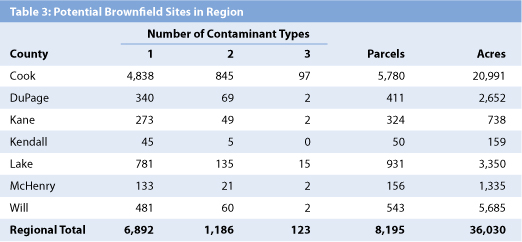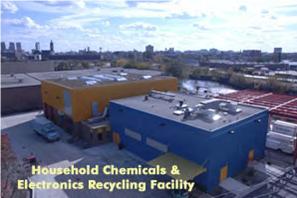Existing Conditions of Waste Disposal
Overview of Existing Conditions
Solid waste disposal in Illinois is governed by various laws and regulations applicable at the federal, state and local levels. These include:
Federal
- Resource Conservation Recovery Act (RCRA): passed in 1976, the act bans open dumping of waste, encourages resource reduction and recycling and promotes the safe disposal of municipal waste.
- Recycling: the government established a solid waste management goal to recycle 35% of the municipal waste stream by 2005.
State
- Solid Waste Planning and Recycling Act: requires all Illinois counties and the City of Chicago develop, adopt and implement 20-year municipal waste management plans. Illinois Counties and the City of Chicago municipal waste management plans must have a local goal for 25% of the municipal waste stream to be recycled within 5 years of the adoption of the plan. Plans must identify changes, evaluate progress and be revised every 5, 10 & 15 years. Plans are submitted to IEPA for review and comment.
Local
- The City of Chicago instituted a moratorium against landfills within city limits due to high land prices.
- Lake and McHenry counties have passed recycling and solid waste ordinances in the 90's.
In addition to the above, the state of Illinois prohibits certain materials from its permitted landfills, including: bulk liquids, landscape waste, lead acid batteries, potentially infectious medical waste, used motor oil, white good components, such as refrigerators and washers, and whole used tires.
|
The City of Chicago conducts 2 household hazardous waste and tire collection days along with an electronic collection day. City Departments involved in waste management: Mayor's Office for Green Technology, Departments of Environment, Purchases and Contract, Transportation and General Services. |
Chicago's Permanent Household Chemical & Electronics Recycling Facility- 1150 N. North Branch St., Goose Island
Source: Non-hazardous Solid Waste Management & Landfill Capacity in IL, IEPA 2006
Statewide, landfilling waste is the major method for handling municipal waste which comprises 61.2% of the total; recycling is at 36.6% while composting rated at 7.1% (IEPA, 2006). The volume of waste landfilled in the Chicago Metro Region increased by 6.7% between 2005 and 2006 to 12.4 million gate cubic yards (3.7 million tons). This amounted to 22.5% of all waste landfilled in Illinois in 2006. Although the region has the largest percentage for recycling (41%), it is also the region that generates the most waste per capita per day in the state (12.9 pounds), as shown in Table 1. In 2006, 98% of Illinois' waste exported to Indiana came from Cook & Kankakee Counties. Cook County alone sent over 2 million tons of waste to Indiana landfills and transfer stations in 2006, accounting for 78.4% of total waste exports to Indiana. Wisconsin has been suing and appealing rulings regarding waste exported to the state. Wisconsin legislators have been trying to impose unusually high standards of "effective recycling" on out of state waste but so far, this has been struck by the U.S. Court of Appeals and the U.S. Circuit Court in 2 different instances (NIPC, 1998).

